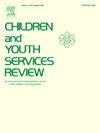Child care providers’ emotional distress links stressors to turnover intention: implications for rebuilding a healthy workforce
IF 1.7
2区 社会学
Q1 FAMILY STUDIES
引用次数: 0
Abstract
In the early care and education (ECE) workforce, providers’ intentions to leave their child care positions (i.e., turnover intentions) have detrimental impacts on the quality of care and signal risks for high turnover rates, an issue that has been endemic to this workforce for decades. To better understand the process leading to provider turnover intentions, this study examined the extent to which providers’ personal and workplace stressors were linked to self-reported emotional distress and subsequently increased turnover intentions. Leveraging longitudinal data from a US sample of 701 home- and center-based child care providers, we found that one in three providers indicated intentions to leave their jobs within the next year. Results suggested full mediational pathways of three sources of stress – financial insecurities and instabilities, workplace disruptions, and concerns for children’s stress – on provider turnover intentions via elevated emotional distress, which highlighted the central role that provider emotional distress played in ECE issues of high turnover and low accessibility. Variations by sociodemographic (e.g., race/ethnicity and income levels) and program characteristics (e.g., roles in the workforce, program status of receiving pandemic-relieving stabilization funds) were discovered in providers’ experiences of personal and workplace stressors, as well as emotional distress. This study suggested ECE providers’ emotional distress and turnover intentions to be serious threats to the current policy and grogram efforts that attempt to stabilize the workforce and support families’ child care needs. Critical investments are identified to support a healthy workforce across different types of care.
托儿服务提供者的情绪困扰将压力源与离职意向联系起来:对重建健康劳动力的影响
在早期护理和教育(ECE)劳动力中,提供者离开其儿童护理职位的意图(即离职意图)对护理质量产生了不利影响,并预示着高离职率的风险,这一问题已经在这一劳动力中流行了几十年。为了更好地理解导致医疗服务提供者离职意向的过程,本研究考察了医疗服务提供者的个人和工作压力源与自我报告的情绪困扰以及随后增加的离职意向之间的联系程度。利用来自美国701个家庭和中心托儿服务提供者样本的纵向数据,我们发现三分之一的提供者表示打算在未来一年内离职。结果表明,三种压力来源——经济不安全和不稳定、工作场所中断和对儿童压力的担忧——通过增加情绪困扰对提供者离职意向的全面中介途径,这突出了提供者情绪困扰在高离职率和低可及性的ECE问题中所起的核心作用。在提供者对个人和工作场所压力源以及情绪困扰的经历中,发现了社会人口统计学(例如,种族/族裔和收入水平)和方案特征(例如,在劳动力中的角色、接受缓解流行病稳定基金的方案状况)的差异。这项研究表明,幼儿教育服务提供者的情绪困扰和离职意图对当前旨在稳定劳动力和支持家庭托儿需求的政策和计划的努力构成严重威胁。确定了关键投资,以支持在不同类型的护理中建立健康的劳动力队伍。
本文章由计算机程序翻译,如有差异,请以英文原文为准。
求助全文
约1分钟内获得全文
求助全文
来源期刊

Children and Youth Services Review
Multiple-
CiteScore
6.30
自引率
6.10%
发文量
303
期刊介绍:
Children and Youth Services Review is an interdisciplinary forum for critical scholarship regarding service programs for children and youth. The journal will publish full-length articles, current research and policy notes, and book reviews.
 求助内容:
求助内容: 应助结果提醒方式:
应助结果提醒方式:


